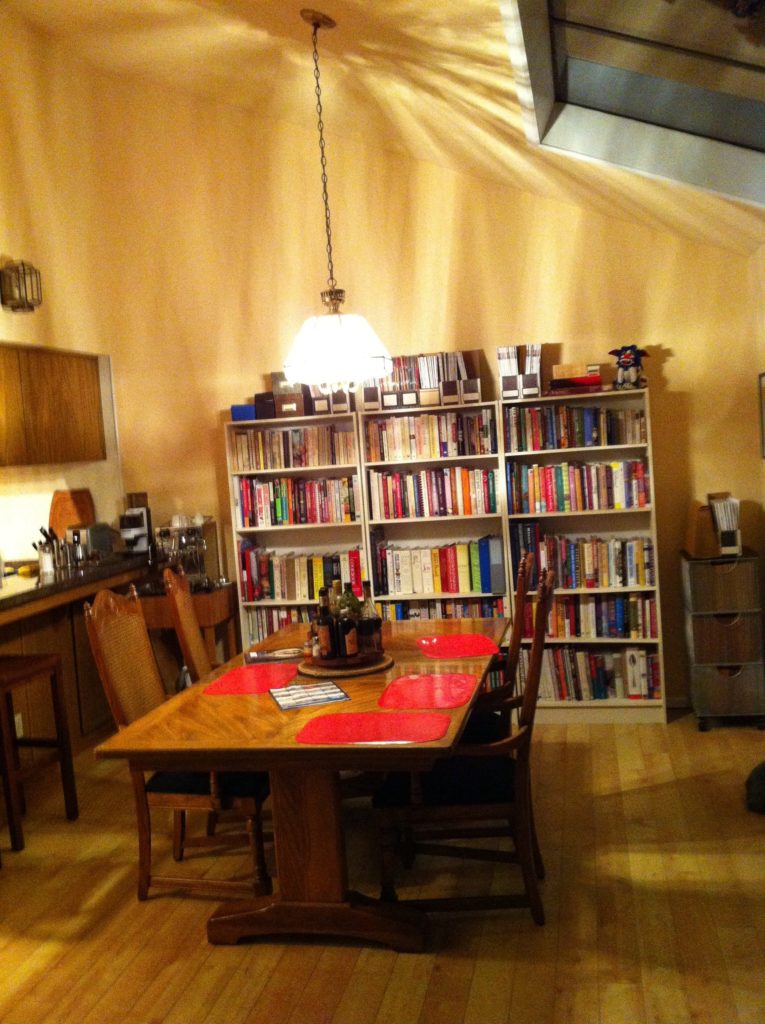From time to time even the most pack-ratty among us has to trim a collection. There’s only so much rearranging one can do to accommodate more books; thus, some must go. My most recent major cookbook cull was at the end of 2012, when we moved into a townhouse that didn’t have built-in bookcases as our house in Seattle did. Previous culls coincided with cross-country moves, as when we moved to Seattle from North Carolina in 2003.
Culled cookbooks come in several categories:
- Obsolete. The recipes may have been fine in 1979, but don’t match the way I cook or eat now. In the case of ethnic cookbooks, the authors may have substituted or eliminated ingredients that were hard to find back in the day. I got rid of an early edition of Charmaine Solomon’s Complete Book of Asian Cooking because it didn’t have lemongrass or other ingredients we now take for granted in Southeast Asian cuisine. (Years later, I bought a more recent edition of the book because it’s such a great reference.) I also had a small paperback Asian cookbook by the 1960’s author Myra Waldo that I culled back in the 1990’s. She eliminated fish sauce from the Vietnamese and Thai recipes because of its “distressingly fishy” smell. Vietnamese food without fish sauce is like white chocolate–the key ingredient is lacking, so why bother eating it?
- Duplicates. Sometimes I’ll receive gifts of cookbooks I already have from family and friends. Or I’ll buy what I think is a revised edition of a cookbook, only to find that it’s the same edition with a different cover–and a higher price.
- Purchase in haste… Impulse buys can sometimes be real treasures; other times, they’re wanton wastes of trees. Some restaurant or celebrity cookbooks fit in this category. Sometimes restaurant recipes don’t translate well to a home kitchen. In addition, some suffer from sloppy editing. Where’s Judith Jones when we need her?
- Diet books. I never had many of these, mostly because I never succumbed to the low-carb/Paleo/gluten-free fads. I have bought a few over the years, sometimes for legitimate reasons and often for comic relief. Most diet books fall into the aforementioned wanton waste of trees category.
So how does one cull a collection of cookbooks? Here are a few of my guidelines:
- Get the book out of the bookcase. Is it dusty? Not a good sign.
- Crack it open and thumb through a few recipes. Does anything jump out at you as something you’d want to make in the next week? Can you get all of the ingredients at a nearby store? Not everyone has a Wegman’s or Uwajimaya handy.
- Go ahead and try the selected recipe(s). Were the proportions off? Did the timing not make sense? The recipe may have been tested on a macho restaurant-style gas range where high heat = incendiary; unfortunately, you’re stuck with an aging electric range with iffy temperature control. Most importantly, did it taste good? Would you make this recipe again?
If the answers to these questions are no, it may be time to donate the book to a good home or the local library–or sell it to a used bookstore. And then go out and buy another cookbook that may work better for you.


Recent Comments